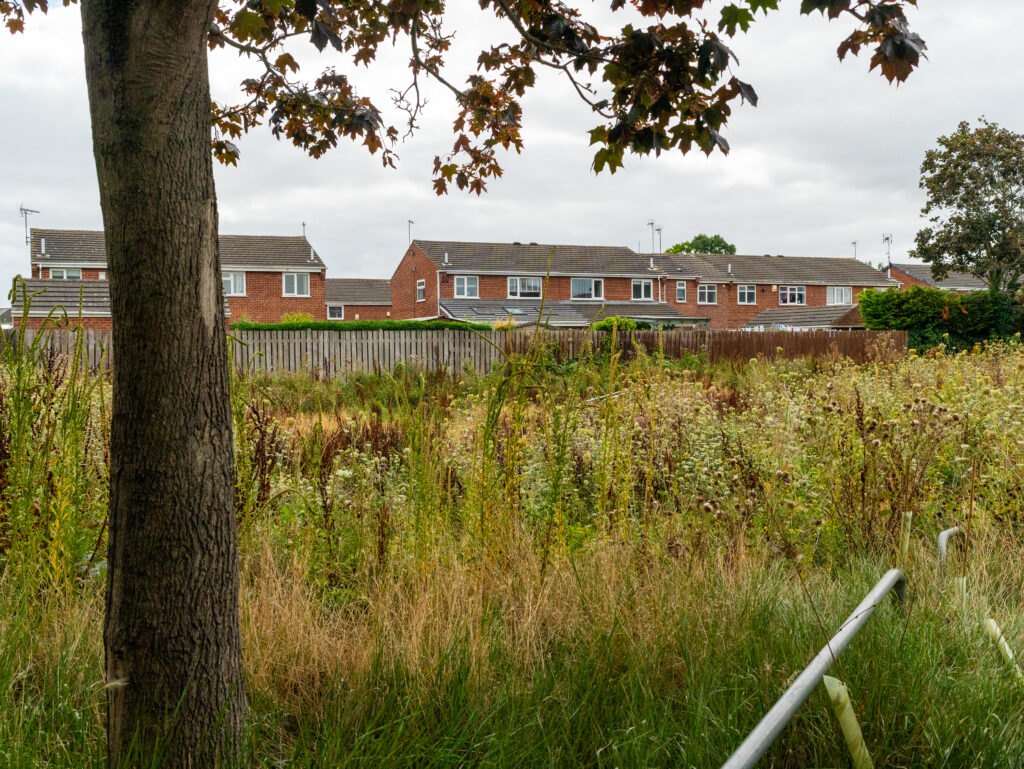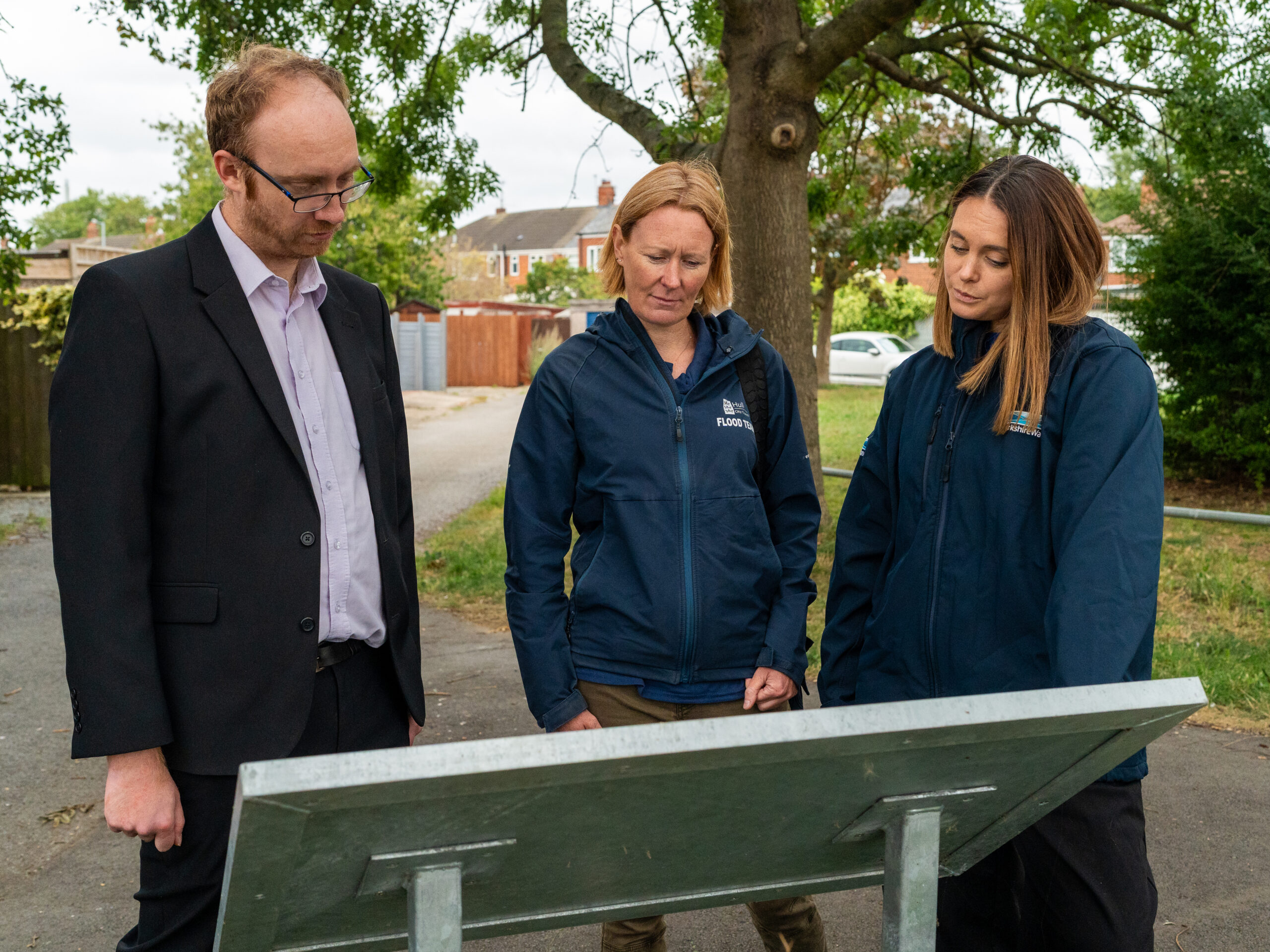Living with Water’s scheme to create natural flood resilience at Derringham, west Hull completed this week, representing a major milestone in the city’s flood mitigation plan.
The Derringham scheme features six new aqua-greens at Louis Drive, Danube Road, Hunsley Avenue, Moorhouse Road, Coventry Street and Manor Road. These nature-based solutions act as temporary basins, storing excess water from heavy and prolonged rainfall, before slowly releasing the water back into the sewer network.
Using Sustainable Drainage Systems (SuDS) in this way dramatically reduces the speed and volume of surface water entering the combined sewer network, allowing it to slowly drain away and lower the likelihood of surface water flooding. As well as providing robust flood resilience, nature-based solutions also create urban habitats that increase biodiversity and green spaces for the local community to enjoy.

The completion of the Derringham flood mitigation scheme in the west Hull suburb is testament to partnership working and collaboration between Yorkshire Water, the Environment Agency, Hull City Council, East Riding of Yorkshire Council and the University of Hull.
Sustainability specialists, Stantec developed an extensive long-term blue/green masterplan for Hull, including Derringham. Contract partners, Mott MacDonald Bentley, started work on phase one of the project in November 2023, using aqua greens and sustainable drainage systems (SuDS) as part of an infrastructure scheme to improve resilience to surface water flooding.
Cllr Charles Quinn, portfolio holder for environment, Hull City Council, said: “The completion of the Derringham project is part of our wider strategic approach for managing our flood risk against the backdrop of a changing climate and in response to the ecological emergency the city has declared.
“This scheme offers flood benefits for communities whilst creating the habitat and ecology that nature needs and enables Hull and its residents to adapt. It’s a great example of the scale of what can be achieved by working in partnership.”

Every stage of the flood resilience plan was carried out in consultation with local residents. Partners held regular surgeries and drop-in sessions so that the local neighbours could see the technical aspects of the scheme, get updates on the development, as well as feedback on progress.
Given the invasive nature of the scheme, bringing local residents on along the journey has been vital for its success. The local community helped to shape the overall appearance of the nature-based solutions, as residents were invited to share their views and input their opinions on the future of where they live and work.
Emma Brown, partnership manager, Yorkshire Water and Living with Water general manager, said: “Our investment for Hull and East Riding into sustainable drainage schemes aims to act as a blueprint for wider partnership work when it comes to flood resilience. Not only does this type of infrastructure help mitigate flood risk, but it also works closely with nature and communities to enhance the local area and showcase the way we can work together for customers and the environment.
“Derringham is part of £23m investment by the Living with Water partnership to deliver surface water flood resilience schemes across Hull and East Riding over the last five years. This comprehensive flood resilience plan began with a permeable paving road surface on Rosmead Street, and includes other schemes at Bilton, Orchard Park, and several schools in the local area. The partnership’s aim is to build on the success of these schemes with further flood resilience projects in the pipeline for 2025-2030.”
Living With Water, established following the floods in 2007,is a partnership between Yorkshire Water, Hull City Council, East Riding of Yorkshire Council, the Environment Agency and the University of Hull – all of which play a role in managing water in Hull and the East Riding.
The Blue/Green plan is a 25-year strategy to create flood resilience across Hull and Haltemprice. It aims to deliver £1 – £1.6 billion of investment in flood resilience by 2080. With 100,000 homes at risk of flooding and 95% of the city below the highest tide levels, the need for long-term, collaborative solutions has never been greater.
Four of the Derringham aqua greens are equipped with telemetry and monitoring equipment that feeds directly into the University of Hull’s innovative SuDSlab project that focusses on improving the development and implementation of Sustainable Drainage Systems (SuDS) to enhance urban environments and manage water runoff effectively.
